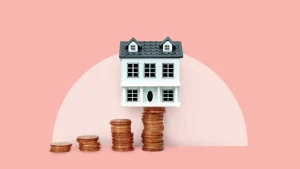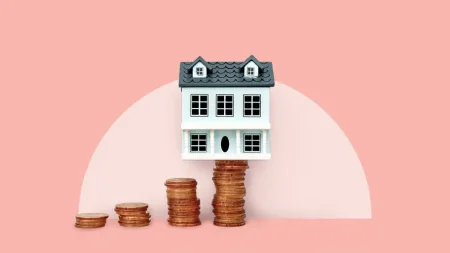Key takeaways
- Some furniture stores offer interest-free financing if repaid within a specific period.
- Personal loans may come with lower interest rates than in-store financing.
- A personal loan is usually unsecured, which means you own your furniture outright.
- Store financing is typically secured, which means you risk losing the furniture if you can’t repay the loan.
Furnishing a home isn’t cheap. The average homeowner spends anywhere from $10,000 to $40,000 outfitting a three-bedroom space, according to HomeGuide. With costs like that, it’s no surprise that many shoppers turn to financing, and as a result, many stores offer in-store financing options. It’s up to you to decide whether to take advantage of in-store financing or if a personal loan would be a smarter move.
How furniture financing works
Furniture financing involves taking out a loan to buy new furniture. You can leave your savings intact and spread out the payments over time.
The two most common methods of financing furniture are personal loans and in-store financing. This table highlights some key differences between these two financing options.
| In-store financing | Personal loans | |
|---|---|---|
| Annual percentage rates | Up to 35% if not paid off during the promotional period | 6.5% to 36%, depending on the lender. The average is 12.64%. |
| Interest-free period? | Possible | No |
| Loan terms | Varies | Typically one to seven years |
| Credit requirements | May not need good credit since loan is secured by the furniture | Good credit required to qualify for lowest rates |
| Is collateral required? | Furniture may be used as collateral to secure the loan | No |
No-interest in-store furniture loan
When a store advertises 0 percent interest rates, there’s always a catch. In most cases, interest accrues but is waived if you pay off the loan within the introductory period, which typically ranges from six months to three years.
But if you miss a payment or don’t pay off the loan in time, you’ll be charged for all the deferred interest that was previously waived. The APR on an in-store furniture loan may be as high as 35 percent, which is comparable to rates on bad-credit personal loans or average retail credit card rates.
Pros
- Potentially interest-free: You could avoid paying interest if you pay the balance off within the promotional period.
- Spreads your payment out: Your checking and savings accounts can remain relatively untouched for the initial purchase.
- May include price discounts: Ask about promotional discounts for using the store’s lender instead of financing on your own.
Cons
- Hefty interest charges if not repaid within promotional timeline: The entire amount of accrued interest could be tacked on to your loan, and rates can be 30 percent or higher.
- Payment may be too high: A large loan amount could result in a large payment if it has to be paid off within 12 to 18 months.
- Your furniture could be repossessed: If you default on the loan, the lender may repossess your furniture to recoup its losses.
Personal loans for furniture
You can get a personal loan from banks, credit unions and private lenders. They can be approved quickly, with funds available the same day you apply in some cases. You’ll receive the funds in a lump sum and repay the balance plus interest in equal monthly installments over a set period.
Personal loan interest rates range between 6.5 percent and 36 percent, depending on your creditworthiness. An excellent credit score could get you a rate in the single digits. Keep an eye out for origination fees — some personal loan lenders charge fees as high as 12 percent of your loan amount, which is taken out of your loan funds before you receive them.
Pros
- Longer repayment terms: You could spread out your payment over one to seven years.
- Usually unsecured: Your furniture isn’t used as collateral for the loan, so you won’t lose it if you can’t repay the debt.
- Lower APRs for excellent credit: If you have excellent credit and choose a short-term loan — typically three years or less — you could get rates below 7 percent.
Cons
- Origination fees may be high: You might have to borrow more than anticipated to cover the cost of fees, increasing your total cost of borrowing.
- Rates can be high for bad-credit borrowers: You could end up with a rate as high as 36 percent if you have bad credit. That’s well over the 30 percent cap most in-store lenders charge, and even higher than the average credit card rate.
- You might not qualify if your income is variable: Because personal loans are installment loans, a steady income is typically required to qualify.
How to get the best loan for furniture
It’s best to get prequalified for a personal loan before you start shopping. Prequalification won’t hurt your score and gives you an idea of the rate, term and payment you can expect.
By researching your financing options in advance, you may discover the best way to pay for your new furniture.
- Weigh the costs of in-store financing versus a personal loan: Calculate your monthly payments with each method, and check your budget to understand how much you can reasonably afford.
- Factor in fees: Check in-store promotions to see whether fees will be added to your loan balance. If you choose a personal loan, be sure to factor in the cost of fees so you don’t come up short on the total price of the furniture.
- Don’t settle for the first offer you get: Check the options available at other stores and with other lenders to get the best offer available to you.
- Check for long promotional periods: If you choose in-store financing, find a retailer that offers a program with an extended promotional period. This will increase your odds of paying off the balance before the interest kicks in.
- Explore bad credit options: If your credit isn’t in the best shape, consider bad credit loan options. Some lenders may offer more competitive interest rates and lower fees than in-store financing options.
Other ways to pay for furniture
Using in-store financing or personal loans isn’t the only option to pay for furniture.
Buy now, pay later (BNPL)
Services like Afterpay and Klarna partner with retailers to offer payment plans. Some BNPL plans offer no interest, but you’ll need to adhere to the payment schedule — many apps split your purchase into four installments, with an equal portion due every two weeks.
Credit card
You may be able to use a credit card with a 0 percent interest rate for a set period. If you haven’t paid off the balance after the promotional term, you’ll be charged interest on the remaining amount. And don’t forget: Carrying a credit card balance could tank your credit score.
Rent-to-own and in-store layaway
With a rent-to-own or layaway option, you pay a rental price for the furniture until you fully pay it off. The interest rates tied to these options can be very high, and they don’t build credit. Some furniture stores also offer layaway plans for a fee, but you can’t take the furniture home until you’ve paid it off.
Shop secondhand
Thrift stores and consignment shops often have gently used furniture for a much lower price than you’ll pay for new pieces. Depending on your financial situation, you are more likely to be able to pay for secondhand furniture in full and avoid financing.
Borrow money from friends
Borrowing money from family or friends can be a great way to save on interest if you have a friend or family member who is willing and able to loan you money. Make sure you’re on the same page about repayment expectations to avoid damaging the relationship. This can include a written and signed agreement detailing the loan, its terms and repayment plan, leaving no room for misunderstandings.
Save up and wait
Paying cash for any purchase is always best. If financing furniture adds too much debt to your monthly budget, consider setting up a sinking fund account instead. You can allocate a set amount to put toward your goal each month until you’ve saved enough to pay in cash.
Considerations before financing furniture
Regardless of which financing option seems most attractive, it’s essential to consider whether financing furniture is a wise decision for you.
- Do you have enough savings to pay for the furniture in full? If you can pay in full, you can always repay yourself (interest-free) rather than repaying the lender.
- Would paying in full deplete your emergency funds? Emergency funds are critical, and you don’t want to deplete them for a furniture purchase.
- If you finance, do you have a solid repayment plan? Ensure that the monthly payment fits your budget and that the source of income for the payment is stable.
- Are you okay with a hard credit inquiry? Both in-store financing and a personal loan will require a hard credit inquiry and could impact your credit score.
- Is the furniture of sufficient quality to last? If you buy low-quality furniture, your financing may outlive the furniture, and then you’ll be stuck paying for furniture you can’t use.
Why we ask for feedback
Your feedback helps us improve our content and services. It takes less than a minute to
complete.
Your responses are anonymous and will only be used for improving our website.
Help us improve our content
Read the full article here












